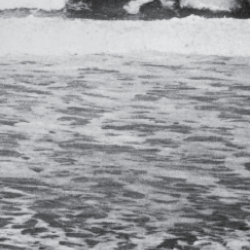Source Institutions
Source Institutions
Add to list Go to activity
Activity link broken? See if it's at the internet archive

In this outdoor, beach activity, learners use tennis balls, water balloons and other simple devices to investigate the movement of waves and currents off a sandy beach. This activity should be done on a gently sloping, unprotected, sandy beach on the outer coast, or the beach of a large lake when there is enough wave action. Learners will notice and collect organisms and remnants of organisms that they find on the beach. They are then given the task of determining how these objects arrived on the beach. Did it have anything to do with the currents, tide, or wind? Learners can also help prepare equipment for the activity, depending the learners' age.
- 1 to 2 hours
- Over $20 per group of students
- Ages 8 - adult
- Activity, Experiment/Lab Activity, Field Trip, Lesson/Lesson Plan, Simulation
- English
Quick Guide
Materials List (per group of students)
- tide tables
- meter sticks or tapes
- 25-meter lengths of rope or twine
- waterproof permanent-ink marking pens
- small, round balloons
- old tennis balls
- watches with a second hand
- copies of Action Cards (pages 9 and 10 of PDF)
- copy of "Seas in Motion" Equipment Cards (pages 5-7 of PDF)
- fishing rods and reels (optional)
- life vest for each learner (optional)
- copies of "Use of the Tide Table" Technique Card (page 8 of PDF)
- pencils
- short fense stakes or wooden dowels (about 80 cm long, and at least 1.5 cm in diameter)
- shells
- small cans or plastic cups (optional)
- pieces of screen or guaze (optional)
- filament or masking tape (optional)
- fishing line - at least 10 pound test (optional)
- medium-sized round balloons
- turkey basters (giant dropper type)
- buckets
- powdered confectioners dye or fluorescein dye
- string
- small cloth bags (teabags, candy or tobacco pouches, or handmade cheesecloth bags)
Subjects
-
Earth and Space Science
-
Earth Structure
- Rocks and Minerals
- Oceans and Water
-
Earth, Moon and Sun
- Tides
-
Earth Structure
-
Life Sciences
-
Diversity of Life
- Plants
- Animals
-
Ecology
- Ecosystems
- Populations
-
Diversity of Life
-
Mathematics
-
Data Analysis and Probability
- Data Collection
- Measurement
-
Data Analysis and Probability
-
Physical Sciences
-
Vibration and Waves
- Wave Motion
-
Vibration and Waves
-
The Nature of Science
-
The Scientific Process
- About Inquiry
- Asking Questions
- Conducting Investigations
- Gathering Data
- Formulating Explanations
- Communicating Results
-
The Scientific Process
Informal Categories
- Animals
- Nature and Environment
- Outdoor Activity
- Physical Activity
Audience
To use this activity, learners need to:
- see
- see color
- read
- be mobile
- touch
Learning styles supported:
- Involves teamwork and communication skills
- Involves hands-on or lab activities
Other
This resource is part of:
Access Rights:
- Free access
By:
Rights:
- All rights reserved, The Regents of the University of California, 1981
